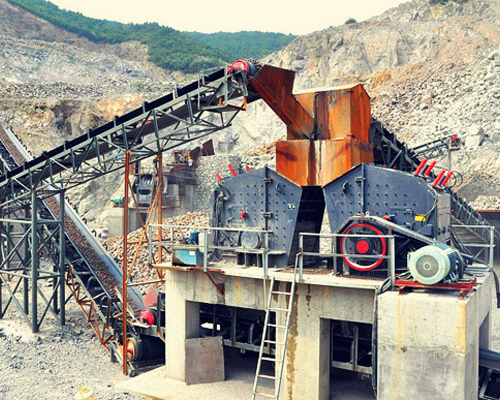Basalt Crushing Plant
Basalt is widely distributed on the surface of the earth, with a high content of silicon dioxide in its main components, accounting for about 45% to 50%. Due to its dense texture, its specific gravity is higher than that of general granite, limestone, sandstone, and shale, so it is relatively difficult to break and the crushing cost is relatively high.Ballast crushing plant is specialized facilities designed to produce the required crushed stones in a controlled and efficient manner.

Basalt Crushing Technological process
- 1. Basalt Quarrying: The process begins with the extraction of basalt from a quarry. Large machinery, such as excavators, loaders, and dump trucks, is used to remove the basalt blocks from the quarry site.
- 2. Primary Crushing: The ballast material is initially fed into a primary jaw crusher, which reduces the size of the material to a manageable size. The output size at this stage can be adjusted based on specific requirements but is typically around 150-300mm.
- 3. Secondary Crushing: The material from the primary crusher is then conveyed to a secondary cone crusher or impact crusher. The secondary crusher further reduces the size of the ballast to the desired output size. The output size at this stage can be adjusted depending on the specific requirements but is typically around 30-70mm.
- 4. Screening: After the secondary crushing stage, the crushed ballast is usually screened to separate different sizes of the final product. This can be done using a vibrating screen with multiple decks. The screen separates the desired output sizes from the oversize material, which can be sent back to the secondary crusher for further reduction.
- 5. Tertiary Crushing: In some cases, a tertiary crushing stage may be necessary to achieve the desired particle size distribution. Tertiary crushers, such as vertical shaft impactors (VSI) or cone crushers, are used to further refine the crushed basalt.The final product sizes for ballast can vary depending on the project requirements and local regulations. Commonly used output sizes for ballast include 5-10mm, 10-20mm, 20-40mm, and 40-80mm. You can adjust the screen sizes and crusher settings to achieve the desired output sizes.
- 6. Shaping and Sand Making: Depending on the specific application, the crushed basalt may undergo additional processing to shape it into a specific product. This can involve processes like VSI crushing (for shaping) and sand making (to produce manufactured sand).
- 7. Storage and Transportation: The final crushed basalt product is stored in stockpiles or silos before being transported to its intended destination. Trucks, railcars, or conveyor belts may be used for transportation, depending on the distance and logistics.
It’s important to note that the specific crushing process and equipment used may vary depending on factors such as the desired final product specifications, production capacity, and site-specific requirements. Therefore, it’s recommended to consult with experts in the field or refer to industry guidelines for detailed information on basalt crushing in a specific context.









